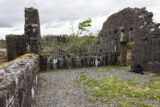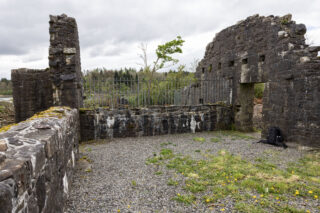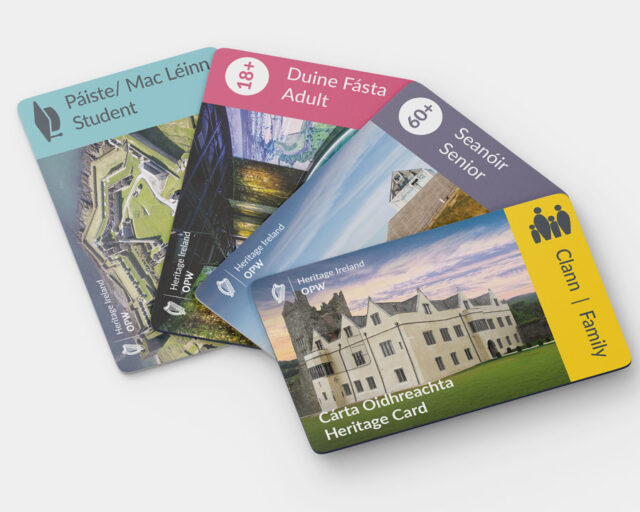Fógra
WARNING: It should be noted that these sites are unguided and a level of care and caution should be maintained during all stages of your visit. The Office Of Public Works (OPW) will not be held responsible for any damages, injuries, or losses that occur
Trinity Abbey
Trinity abbey is found on the southern portion of Lough Key on Trinity Island. In 1215, dean of Elphin, Clarus Mac Máilin O Maelconaire, founded the Premonstratensians abbey of Holy Trinity. The abbey’s monks were added to in 1228 by a group of monks from the Cistercian Abbey of Boyle. The Boyle monks came with their manuscripts, eventually becoming the Annals of Lough Cé. Trinity abbey was briefly captured in 1235 by the Anglo-Normans, the same year the priory was elevated to that of an abbey. The death of anchoress Gormfhlaith, recorded in 1436, is associated to the religious rite of consecration. Making Gormfhlaith dead to the world allowed her to follow her ascetic life in intensive prayer in a permanent enclosure in a church cell.
In the later Middle Ages, Trinity abbey was the head of the Premonstratensians, also known as the White Canons. With such importance came extensive financial and territorial gain. After the suppression of the monasteries, the abbey was held in trust by the McDermott’s, the ruling dynasty of Magh Luirg, north-east Connaught. King James I confiscated the abbey in 1608.
The abbey’s church is a nave and chancel church. A gallery was to the west end with high windows and beam-holes present. The windows all have external chamfers. The nave has one round-headed two lancet window. Between the two tie-stones in the south wall is the burial place of Sir Conyers Clifford, who died in 1599, Commander of the English forces in the Battle of the Curlews.
Three beam-holes and a high doorway indicated that a rood-screen and loft were here to separate the nave and chancel. A 13th century triple sedilia sits on top of a tomb. The altar that was here was a later addition. The north wall doorway leads to the sacristy. The east range had originally five rooms, but no cloister. The south and west range were never built.
Excavations carried out in 1991 recorded over 60 inhumations of adult males, females and children were found. Fifteen silver coins of Henry VIII and Elizabeth I, along with a bronze ferrule, iron knife, brooches and nails, were uncovered. Pottery from the 18th to 20th centuries, including earthenware and flower pots, were also found during the excavation. The excavation was required in advance of conservation works.
Visit Historic Environment Viewer for more information on Trinity Abbey
Protect our Past - Click here to read about the importance of protecting our country’s unique heritage sites
This national monument is protected in accordance with the National Monuments Acts 1930 to 2014
Gailearaí
Suíomhanna cóngarach
Reilig Mheigiliteach na Ceathrú Móire
Na tuamaí meigiliteacha is sine in Éirinn suite i dtírdhreach drámatúil neoiliteach
Timpeall 33.8 km ón
Mainistir Shligigh
Áit a mbaintear macalla as paidreacha na mbráithre i measc na bhfothrach
Timpeall 34.3 km ón
Caisleán Ros Comáin - Túr Thiar Theas
Caisleán Normannach drámatúil, taibhseach, ón tríú haois déag
Timpeall 39.7 km ón



